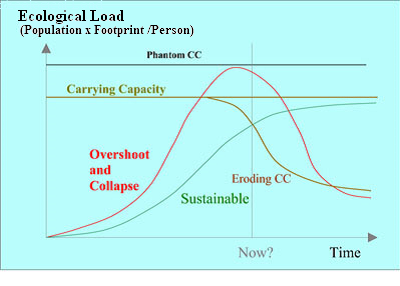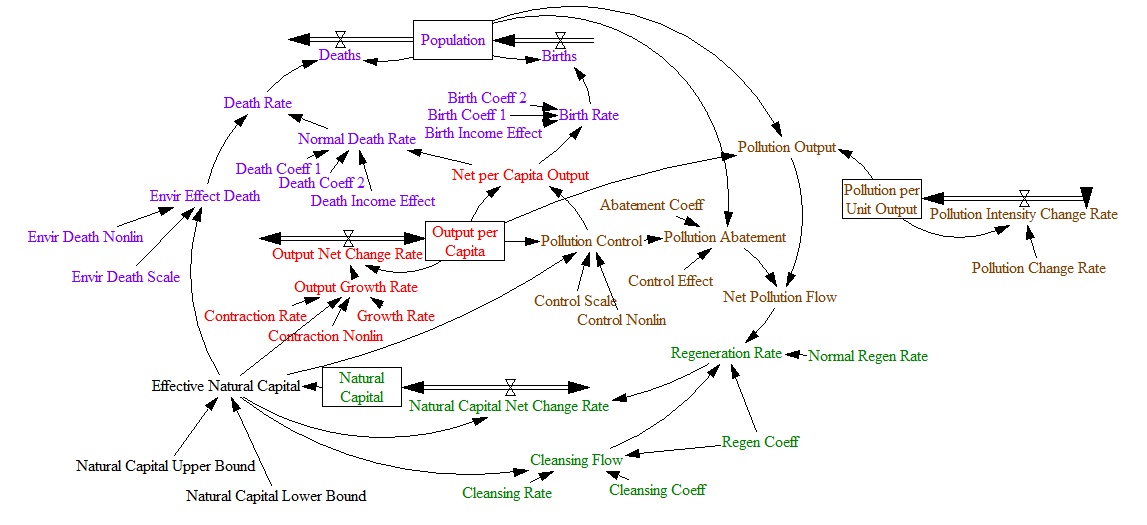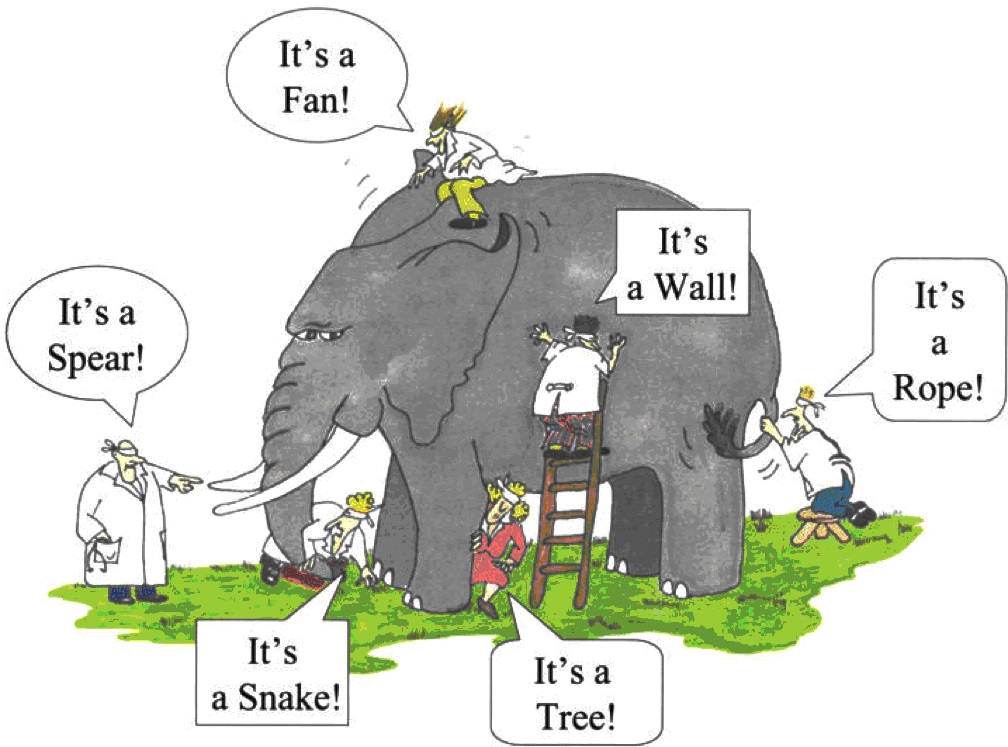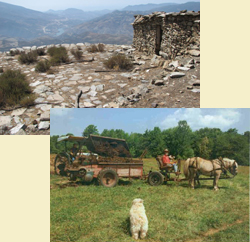« Clinging to the Titanic, or how to let go | Home | What Is the Deep State? »
The holarchy of rules and the problem of silos of knowledge in the quest for the survival of humanity
By Karl North | March 31, 2017
Seen in retrospect, the failure of those concerned with the advancement of knowledge to respect the complexity of the world, and to move toward ways of doing science that account for its connectivity, may be one of the greatest causes of the ongoing collapse of Western Civilization[1]. As products of that civilization, we are all in varying degrees more prisoners in silos of compartmentalized knowledge than we need to be. And the resultant mistakes in interpreting the world and solving the problems of living are greater than is necessary. This essay is an attempt at a partial remedy, a set of tools for seeing and seeking a more generalized, transdisciplinary knowledge that reveals a holarchy in which lower levels are necessary to properly understand higher ones. The holarchy is also a way of testing to what degree one’s policy proposals for confronting the collapse are grounded in the all necessary underlying levels of knowledge.
If the human species wants to survive and to behave in ways that might increase its longevity, it must learn and respect a holarchy of rules and options. The holarchy can be described as levels in a pyramid in which the lower levels limit what can happen in the ones above them. There is of course more to understand in the systems and structures of interdependency at each level, but the rules are the starting point. Later I will offer another pyramid as a guide to understanding within levels.
The biophysical rules are at the bottom because they constrain what our species and all others can do to survive, and the size and resource consumption of populations. They include the rules of energy and matter – the laws of thermodynamics – and the rules that govern ecosystems, in particular the carrying capacity (CC) of a resource base. The carrying capacity in turn governs the size and consumption per capita of the populations that can survive. In simple terms, consumption of resources must stay within carrying capacity or carrying capacity will erode and populations will decline and possibly go extinct. This graph gives some idea of the range of options.
Because our species has such a great relative ability to consume resources, the ecological load that situates our species relative to carrying capacity is of necessity a product of the population and the consumption footprint per person. The temporary windfall of fossil energy has permitted a rise in consumption to a phantom CC[2] far above the actual CC, which results in rapid erosion of the actual CC.
Although many of the biophysical rules are known today, most of humanity has so little understanding of them that nothing higher in the pyramid can be properly understood and all policies adopted eventually fail. Test yourself. Do you have at least the elementary understanding of the rules of matter, energy and ecosystem rules and their implications for what happens in the world, a knowledge needed to have any chance at understanding anything higher in the pyramid? If not, that is the first knowledge gap that you need to fill.
The political economy and its rules
Because of its place in the holarchy of rules, no social system can last for long unless it obeys the rules of the biophysical system. In turn, one can change little of consequence in a social system without an understanding of its internal rules and structure.
The important key to understanding a given society is its political economy – its rules and structure of power relations, the power to make the decisions that affect everyone’s lives. Just as energy and its structure, forms and flows are central to a grasp of how biophysical systems work, so power, its distribution in a society and its forms and routes of implementation are vital to seeing how and why things happen in a social system.
In a society whose rules mandate private control of resources and their use in the economy, and allow unbridled competition, power inevitably concentrates in a minority to such an extent that all major institutions – the market economy, government, media, schooling and science – fall under its control. This description represents capitalism as an ideal type, variants of which are dominant in the world today. In this social system the leadership of the minority, acting as a loose oligarchy, stays in the background and rules and shapes society by operating indirectly through the social institutions it controls. When one understands the political economy of capitalism, one can see that attempts at lasting change that do not serve the interests of the oligarchy will not occur through government channels or the electoral system; capitalist government exists to work out the differences within the oligarchy; other than that function it is just a stage show meant to fool the people.
A society with another kind of political economy will exhibit a dramatically different decision and policy making process. In Cuba for example, where concentrations of private power are banned and private investment from outside is strictly controlled, no powerful private oligarchy exists to control government planning. Agronomists in the Ministry of Agriculture, for instance, can legitimately disagree and debate what agricultural policies are best for the Cuban people without regard for what is best for the likes of Dow Chemical, Monsanto, Conagra or Tyson Meats, unlike the US Department of Agriculture, which operates as a servant of agribusiness corporations. And in Cuba the Ministry of Agriculture, not private central banks like Citibank or Morgan Guarantee, has a major say in the allocation of agricultural investment.
A tool to understand how societies work
As explained above, there can be no effective strategy for political change without a deep understanding of the political economy: how it operates, its dynamics and structure. The iceberg graphic – another holarchy – is an important conceptual tool to gain that knowledge. The iceberg tool can be applied to biophysical systems or any complex system, a large corporation for example. Most people see only events and a few patterns – the tip of the iceberg – and try to effect change based on that superficial knowledge. The iceberg tells us that if we can identify events as part of patterns and trends of behavior, we need to look for their causes more deeply in the iceberg – in the structures that generate and explain them.
The underlying structures and mental models – the collective beliefs and values – are essential to know because they limit the options for social and individual behavior or change. A pattern of suburban sprawl in a capitalist society is an example of a physical structure that tends to limit transportation options to the use of motor vehicles. The iceberg directs further inquiry into the relationship of the rise of suburbia to related structural elements like the political economy of capitalism. As described above, the concentration of power under capitalism in private corporate institutions – in this case the auto industry and related industries like energy – explains why so much of the transportation sector is devoted to motor vehicle transportation, one of its most energy intensive possible forms.
Knowledge of the underlying social structures and collective mental models go hand in hand. A focus on changing moral values alone will not achieve much if the social structures are not understood and altered in ways that facilitate the new values.
Again, test yourself in your understanding as directed in the iceberg. Have you learned enough about the political economy of the society you live in to have any chance of devising effective strategies for change that would allow the human species to get through the coming population bottleneck[3] and rebuild a civilized society at a much lower level of access to energy? Social science, like biophysical science, is not something one can learn by winging it. The use of the iceberg tool may reveal why the existing political economy limits options and methods of change, as described in the hierarchy of rules.
An example of silo-ism
The Limits to Growth project[4] (LTG) is an example of self-imprisonment in silos of knowledge. It displays a good knowledge of the biophysical level of the holarchy of rules but practically no knowledge of the existing social system – globalized capitalism – whose problem dynamics its models reveal. The LTG authors omit from their world model a submodel of the rules and structure of the political economy, an understanding of which in the hierarchy of rules is necessary to consider options for change. That is, they fail to apply explicitly to the existing social system and its complexity the same modeling method that they deem necessary to address the complexity of the world system. Instead, the causal forces in the social system are merely implicit, embedded in the data they use to build the world model. The political economy is a phantom presence in the decision rules of the model – the auxiliary variables that comprise the flow equations in the model. In effect the authors of LTG treat the global capitalist power structure as an external, as if it were an immutable fact of nature. Consequently, when they propose and simulate policy scenarios to address the problems of sustainability their world model reveals, their world model has no way of showing how the social system will react to these policy scenarios. The authors are simply plugging in calculations of the changes to the key stocks and flows that they expect from each policy scenario. To achieve any of these scenarios except ‘business as usual’, their world model needs to include a submodel of the rules and political economy of the social system to provide insights as to what structural changes would be necessary at the systemic level in society. Here is a simplified version of the LTG model.
As you can see, there is no social system explicitly represented in the model. It’s as if the world were as Margaret Thatcher said, “There is no such thing as society, only individuals maximizing self-interest”. As a result, the authors of the Limits to Growth do not think intelligently about capitalism as a social system. Here is an example.
The title of chapter two of the LTG book - “The Driving Force: Exponential Growth” – illustrates the invisibility to the authors of the social system as a dynamic system. Growth does not drive anything; only people organized in a structure of power relations do. This is the same mistake that mainstream economists make when they speak of the market as a driving force, thus avoiding revealing questions such as the effect of monopoly control and the power of the capitalist class to make the decisions that shape everyone’s lives. LTG co-author Donella Meadows, who was a pioneer in promoting systems thinking, nevertheless revealed the same inability to describe the existing political economy of capitalism because she was never willing to seriously study and model its system dynamics. When she wrote about the problem of the sustainability of society in one paper, all she could say was “it’s the economics”. That hardly begins to expose the nature of the problem.
The avoidance the LTG authors display is common in the capitalist world because to properly describe the political economy of capitalism as a system is revealing, and is therefore considered subversive, and carries penalties, especially in the US. So instead, people who have the investigative skills tend to remain in the comfort zone of their intellectual silos, defending them with bounded rationalities.
The iceberg and options for change
Learning from the iceberg tools to see below the surface of events is essential to know how deep it is necessary to intervene in the social system, the biophysical system or any complex system to achieve lasting change. To use another example in the physical structure of transportation, the iceberg tool directs us to understand why a pattern of increasing traffic jams in the transportation system cannot be solved by widening roads: this will only attract more cars, replicating the problem. To achieve the necessary leverage will require structural changes: in the political economy that in turn changes the physical structure of transportation. It will also require a shift in the collective values and beliefs, such as the car and happy motoring as a cultural ideal. Hence the manufacture of such cultural ideals and who controls that process is revealed as a problem to be solved.
The recurrence of traffic jams despite attempts to solve the problem demonstrates resilience – a general property of complex systems. Resilience can be bad or good depending on one’s goals for the system. The lesson of the iceberg is that policies that intervene too high in the iceberg may fail because they encounter policy resistance – an ability of the system to bounce back when changed – an instance of resilience. Deeper interventions that alter system structures will be more politically difficult but are more likely to result in lasting change. However, deeper intervention also demands a systemic understanding of society, starting with its political economy as described previously, to find the effective leverage points in the structure.
Individual vs. social options for change
Past social options, once acted upon, limit individual options for many people later on. In the US, after an alliance of the fuel, auto and tire industries conspired to trash the railroads and replace rail with auto transportation, it became difficult to travel by train, despite rail being much more energy-efficient.
Some individuals appear to have freedom to choose. Many people think that because an individual can make a change, it can be scaled up to a national policy. People who put solar panels on their roofs, for example, often assume that because they have done it, the whole society can change to run on solar electricity. In general then, proposed changes at the level of the whole society require consideration of many interconnected factors in both the social and biophysical realms that an individual may get away with ignoring, but only for a while.
Conclusion
Many civilizations have collapsed for lack of knowledge and application of the holarchy of rules. The paradox in the present collapse of industrial civilization is that, taken as a whole, humanity knows enough of the holarchy of rules and the realms of knowledge it represents to mitigate or at least navigate this collapse, but for reasons explained above, the knowledge often exists in isolated compartments, often in different individuals. Few of us have, or are willing to gain enough integrated knowledge of the whole. What are your gaps of knowledge in the hierarchy of rules and systems? Are you taking the lesson of ‘the blind men and the elephant’ seriously?
[1] For summaries of this situation from different angles, see the following:
Humans Have Energetically Overpowered the Earth
Locked In: The Paradox of Capitalism
Clinging to the Titanic, or How to Let Go
[2] Catton, William R. 1982. Overshoot: The Ecological Basis of Revolutionary Chance
[3] Catton, William R. 2009. Bottleneck : Humanity’s Impending Impasse: Humanity’s Impending Impasse
[4] Meadows, Donella H. and Dennis L., and Jorgen Randers. 2004 Limits to Growth: The 30-Year Update.
Topics: Social Futures, Peak Oil, Relocalization, Uncategorized | No Comments »





